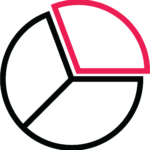The Client In an era of online shopping and next-day delivery, this US-based Cprime client…

Global Aerospace Leader Nails Huge Agile Transformation
Case Study Details
Industry: Aerospace
Highlights the power of Cprime’s Agile and SAFe® training and coaching programs:
- In highly regulated industries
- Outside of strictly software development environments
- Under highly complex circumstances
- When resistance to change might be an issue
Demonstrates:
- How to effectively kickstart a SAFe® transformation
- How to show quick incremental value and results
- The value of in-person, “face-to-face” planning events
Key Agile Transformation Facts:
- The organization explored agile for more than three years before establishing the transformation.
- Cprime coaches included Aman Bhatia, Dan Teixeira, and Aaron Doperalski.
- Training included Agile 101, SAFe® for Teams, Leading SAFe®
- The first Program Increment (PI) planning event took place in April 2019. The in-person event involved nearly 100 team members.
Overview
This organization is one of just a handful of truly global players in the aerospace industry. With their core business surrounding the research, development, manufacturing, and testing of critical engines and other components for military and commercial airplanes worldwide, speed and efficiency take a necessary second place to safety, precision, and reliability. Still, the organization recognized that adopting an agile methodology would improve all these aspects of their business and more.
So, with the help of Cprime trainers and agile coaches, this aerospace leader taxied to a different runway. They adopted Scrum and have been sprinting since 2018, and they launched their first Program Increment (PI) in late April 2019. Here’s how and why they did it and a glimpse into the positive results they’re already experiencing even as this new and exciting journey begins.
The Downside of Success

A considerable part of the organization’s success and industry-leading position stems from the practical application of cutting-edge technology, research, and development in aeronautical propulsion. However, their development timeline for new products had averaged around 20 years from concept to market. Leadership recognized this prolonged timeline as unsustainable in today’s hyper-competitive market.
A Cultural Shift was Needed
At this organization, there was a “command and control” culture that is typical in aerospace companies, which was hindering progress. This transformation focused on creating a culture that empowers employees to take risks, make bold moves, and even make mistakes. “People need empowerment to make decisions at their level,” the executive sponsor said. “It is important to build a culture where employees are entrusted and enabled to reach their maximum potential.”
The executive sponsor enrolled himself and 250 other leaders in a three-day leadership development program at Thayer Leader Development Group at West Point. They came away with a completely different perspective on management: from dictating to collaborating, and from “how we’ve always done it” to “how can we do it better?” The impact was widespread and immediate. As we’ll see, this top-down cultural shift toward collaboration and continual improvement led directly to the company’s agile adoption a short time later.
“Culture is what enables a company to be sustainable and profitable for a long time,” the executive sponsor said. “Organizational agility allows a company to better compete against current and future competitors.” The organization’s leadership team recognized that organizational agility and a culture that fosters innovation were vital to meeting the challenge of developing new technology and bringing it to market fast enough and consistently enough to maintain their leading role in the industry.
Going Agile Was a Natural Evolution

The 2019 Agile Transformation
Another major initiative the organization pursued was a complete agile transformation for one of its divisions. As a first step in rolling out this critical change, twelve component teams were selected for in-depth training and deployment by Q2 of 2019.
According to one of the company’s internal Agile champions, “We had started piloting agile three years ago, so we had tested the waters for a few years already. We saw that our customers were looking for a more collaborative and iterative process, and we had all the motivation we needed to go live.”
Challenges Leading Up to Launch
But, of course, there were challenges to overcome:
- This is a highly regulated industry, and the products coming off their lines keep planes in the air. Their product certifications last 25 years. So, there was anxiety around changing development and production workflows to speed the process.
- They couldn’t shut down divisions to accommodate a massive training and workflow integration program, so they had to maintain production while incorporating the necessary programs.
- Finally, there was a general skepticism surrounding Agile based on a lack of knowledge and some important misconceptions around the methodology frameworks. This led to initial resistance from many long-term workers who felt threatened by process changes they perceived as changing their roles and value in the organization.
One leader recalled, “These were all people with almost no agile background or knowledge, and with often decades of entrenchment in their current ways of getting things done. Finally, we needed to effectively address the complexity of the system we were hoping to change and ensure we had a proper support system in place. After all, we were trying to pull off a major cultural and process shift, all while maintaining production levels.”
Facing these challenges required long-term planning, intensive training, and the help of seasoned and experienced agile coaches to “steer the ship” effectively during the transition.
Reaching Out to Cprime for Help

He had been in attendance at Cprime’s Agile 101 course. He recommended partnering with Cprime to lead training
and ongoing coaching as the program kicked off. Cprime Agile coaches Dan Teixeira and Aaron Doperalski ended up
adapting three different training courses to the organization’s unique circumstances (Agile 101, SAFe® for Teams, and Leading SAFe®) and handling ad hoc individual and team coaching needs as they arose.
They settled on a hybrid approach in which all twelve component teams would make up one ART, using month-long sprints and a three-month Program Increment (PI). Each component team would be considered an Agile Team in this arrangement, responsible for their daily standups, etc. However, the full ART needed to get together for a face-to-face PI Planning Meeting every three months, with the first one scheduled for April 2019.
The First PI Planning Event was a Huge Success
Despite the practical challenges they faced and the mental and emotional resistance that always accompanies change, the two-day PI Planning Meeting proved a massive success.
Attendees at all levels voiced very similar feedback as the event was wrapping up:
- They felt far better integrated with stakeholders and shared services.
- They had a much clearer plan for how the work would flow over time, including solid milestones to shoot for and clear definitions of when the teams reached them.
- They had a better understanding of dependencies and related opportunities for organizational changes.
- They could see the new workflows would significantly improve engagement and collaboration.
- They felt heard and understood, with everyone having had a chance to discuss wants and needs within the framework of the team’s unified goals.
- Perhaps most importantly, everyone felt the whole department was “on the same page at the same time” like never before.
During the closing retrospective discussion, there were no negative comments noted and all suggestions for improvement were positive and constructive. Team members left looking forward to accomplishing what they’d set out to do and reconvening in three months to repeat the process.
The Results
“I couldn’t have hoped for a better result,” one executive sponsor concluded, “and Cprime was a huge part of that. This is a tough business to come into and orchestrate change. A lot of these engineers are very stuck in their ways. But, the trainers from Cprime were easy to work with, and, most importantly, they got buy-in, which is what really made all the difference.”
With the first PI Planning event completed and teams hard at work at their first sprints, the focus switched to “Day in the Life” training and coaching, custom-tailored by Cprime to respond to the organization’s specific needs and challenges. This effort continued through the initial three-month PI. Additionally, the organization had Cprime train internal SAFe® Program Consultants (SPCs) to facilitate duplication of the success in their other divisions.
If you’d like to see similar results, contact Cprime today!
About Cprime
Cprime is an industry-leading, full-service global consulting firm with a focus on providing integrated and innovative solutions around digital transformation, product, cloud, and technology. With over 20 years’ experience, we provide strategic and technical expertise to businesses across more than 50 industries. Our team of advisors and technical experts have the know-how to meet organizations where they are to develop actionable solutions and solve business challenges. We also collaborate with our expansive network of partners to design, deploy, and harmonize technology stacks across organizations. Our mission is to empower visionary business leaders and teams to reimagine the future of work to achieve better outcomes.
Mentioned Cprime Team Members
Aaron Doperalski
Delivery Director & Enterprise Coach
Aaron has over 5 years of experience in Agile delivery, mentoring, and coaching. He has proven experience leading organizations in their Agile journey within lean startups, the federal sector, and commercial industries including healthcare, education, insurance, and manufacturing.
Dan Teixiera
Head of Global Delivery
Dan has over 15 years experience coaching organizations on Agile and lean business and IT practices to build mission critical applications to meet organization business practices. Dan specializes in strategic planning, change management, and large-scale enterprise transformations.
Want to share with a colleague? Download the PDF.
Related Resources


Overview A recognized innovator, this Midwest-based insurance provider and long-term Cprime client has been developing…
Some of the images used were designed by freepik.com


